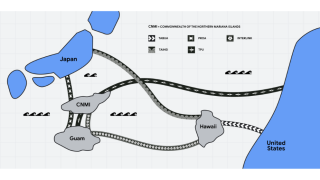Focussing on the process of identifying a career mentor and exploring how the industry can inspire young engineers to consider subsea as a career path, one of the key speakers during the workshop was Caroline Puygrenier, director of strategy and business development at Interxion.
As one of the few senior women in this rather niche area of the wider telecoms industry, Puygrenier says that it is for this very reason that she decided to take part.
“I have been working in the telecoms industry for nearly 25 years and I have noticed a lack of diversity. Not only gender but in terms of age as well. I know some of my colleagues and contacts, being close to retirement age, and not being in the position to pass either the experience or knowledge to younger people or women in general.”
Adding to that she says that there far too few women working in the industry and though we shouldn’t push more to join we should encourage them by creating interest.
“That’s what really drove me to join this group, to see how can I help with my background, being not just in the telco industry but being a woman and being non-UK. Also by driving some content and some interest around telco in general. So that’s quite crucial for me.”
With its niche position in the market, its heavily technical aspects and virtually little to no knowledge of how the sector works outside of its industry – how do we get more women to get involved in subsea? According to Puygrenier it’s all in the grassroots approach to recruitment and education.
“We need to go back to the grassroots of people who leave college or are about to start university, to say with such a degree, this is what you’re going to get,” she explains. “I think a lot of people I speak to in general who are not in our industry do not know or understand what we do.”
“You look at YouTube, you look at Facebook, you look at your bank and so on, and so everything somewhere will go through a submarine cable, and I don’t think people really understand that. It’s about saying you as a person can influence what’s happening in the world of telco changing in general.”
Instead of the usual doom and gloom, being the only woman in the room can often be an asset when navigating mostly male-dominated spaces.
“If go to a meeting, of ten people, you’ve got a 99% chance that you’re going to have nine men in a dark suit, and you’re going to be the only woman there. So who are people going to remember? Not the other nine men around the table, but the one who stands out. Not for the wrong reasons, obviously. You can’t turn up and make a fool of yourself, but if you have the correct experience, the correct approach in the industry and so on, you’ve got more chances to actually stand out than the other nine men in the dark suits.”
As director of strategy and business, Puygrenier is responsible for the strategy and the business development of Interxion’s connectivity segment. I pressed her about some of the company’s recent announcements and how these plans fit into the wider strategy for the business.
One of the most recent pieces of news being the partnership between Interxion and Aqua Comms and expanding Aqua Comms’ data centre presence in Marseille.
“The one thing to remember very strongly is we are carrier neutral. We obviously have partnerships with specific carriers, such as Aqua Comms, but we are carrier neutral,” added Puygrenier. “So we work very closely with a multitude of carriers in different spaces.”
“For Interxion, working with players such as Aqua Comms is critical to ensure that locations such as Copenhagen attract OTTs/content providers, enterprises and become connectivity and content hubs know that if I, as an OTT, can distribute my traffic to the end user. So for Interxion, it is critical to have partnerships with our carrier community, Aqua Comms being a very important one.”
In an interview with Capacity from 2018, Mike Hollands, director of marketing and business development, at Interxion commented that ‘London has become a bit of a bottle neck’ with of the subsea cables landing there and that Marseille to one extend or another also runs that same risk.
Speaking to Puygrenier about that same concern, she says that Interxion is working hard to ensure that this doesn’t happen.
“As much as we work with Aqua Comms, we also work with other submarine cable partners to say yes, of course, we want to in Marseille but looking at other locations are important too.”
According to Puygrenier, only three or four short years ago Marseille used to be a transit city. People would land in Marseille to move their traffic to other locations - now Marseille is becoming a content hub.
Overall, despite the natural concerns, she says they’re “working with partners to ensure that we have multiple options in Marseille to provide resilience and possibly other locations are considered for the distribution of traffic.”
Taking a bird’s eye view of the market as a whole, the biggest trends in the space are OTTs, data and the emerging technologies driving them.
Looking back five years, she says that it was once telcos driving the subsea world and OTTs were still customers that required capacity to distribute video traffic or social media. Now as we know OTTs are leading the charge. Beyond this and alongside the OTTs emerging trends, including the Internet of Things (IoT) is a big one for the road ahead.
In short, she says, “I think there’s going to be even greater requirements for submarine cables in the future, that’s for sure.”
For Interxion however there are three key business segments it has identified as critical for the business. Connectivity, which includes submarine cables, satellite services, ISPs, carriers. The enterprise segment and the platform segment, which includes everything from broadcasting, sports, gaming, cloud and & content providers.
“Between those three segments, we review with all our customers in all three segments to understand where they want Interxion to be growing next. The strong message from our customers is Interxion you have a strong position where you currently are, 13 cities in Europe, please help us grow in those cities.”
So the company is doing just that by growing its presence in seven of its thirteen cities at the same time. In Frankfurt, it is building FRA15, its 15 data centre in Frankfurt, while in Amsterdam; the company is just about to finish Amsterdam 10.
However, it is also evaluating other locations. “We have a partnership with a company called icolo in Kenya. Recently, we announced in May, we took 40% of the company, in terms of an investment in the company and there are other plans after this as Nairobi is being currently built,” explains Puygrenier.
But that is not the end of its growth plans, as Puygrenier hints that the company is investigating future locations saying: “we’re reviewing potential at other locations.“









